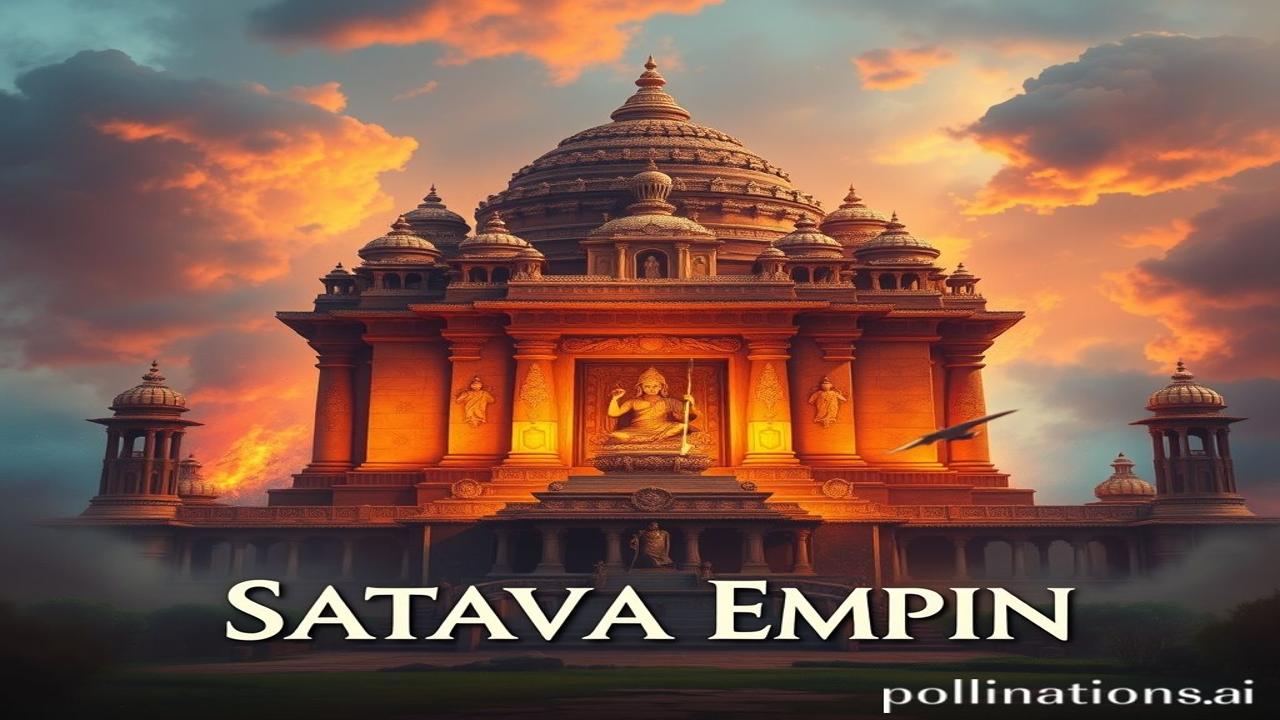Waqt Ki Dhool Mein Chhupi, Andhra Path Ki Shan: The Satavahana Empire
Kabhi socha hai, jo structures hum aaj dekhte hain, unke neeche kitni kahaniyan dafan hain? Imagine walking through the Deccan, say, 2000 years ago. The air hangs heavy with the scent of spices from bustling marketplaces, the rhythmic clang of metal from workshops, and the chanting from intricately carved Buddhist chaityas. Yeh sab, a part of the glorious Satavahana Empire, jo Andhra Path ki shaan thi, aaj bhi humare khoon mein daudti hai.
The Satavahanas: Who Were They and Why Should We Care?
The Satavahana Dynasty, also known as the Andhra Dynasty, reigned over a large part of the Deccan region of India, roughly from the 2nd century BCE to the 3rd century CE. Think of them as bridge-builders – connecting the Mauryan legacy with the later Gupta Empire. They were instrumental in establishing a stable and prosperous kingdom, fostering trade, art, and a syncretic blend of Hinduism and Buddhism.
Unki importance is that they championed “Bharatiyata” long before the term existed! They fostered local languages, promoted Indian art forms, and protected the Deccan from foreign invasions. Imagine a time when different cultures and ideas were constantly clashing, and the Satavahanas managed to create a thriving environment where all could flourish.
Jeevan Ka Rang: A Day in the Life
Imagine a warm afternoon in Pratishthana (modern-day Paithan), the capital. Ma Kamala, a skilled artisan, carefully polishes a bead made of carnelian, a deep red stone. Her husband, Deva, is a merchant, preparing to travel to a faraway port with a caravan laden with textiles and spices.
Meanwhile, in a nearby vihara (Buddhist monastery), young monks chant verses from the Dhammapada. The air is filled with the smell of incense and the hushed whispers of prayers. Rajkumar (Prince) Satakarni, the heir apparent, is visiting the monastery, seeking guidance from the venerable Bhikkhu (monk). He’s not just a ruler; he’s a patron of knowledge, ensuring that dharma (righteousness) prevails in his kingdom.
“Bhikshu,” Satakarni asks, “How can I, as a king, ensure the prosperity of my people?”
The Bhikkhu smiles. “By ruling with compassion, by protecting the weak, and by fostering knowledge. Dharma is the foundation of a strong kingdom.”
Ma Kamala sighs, wiping sweat from her brow. “Yeh mehenga pathar aajkal mushkil se milta hai,” she mutters, but her eyes sparkle with the joy of creation. Even small artisans felt secure because the Satavahanas created a stable and thriving economic atmosphere.
Satavahana Legacy: A Timeless Echo
Aaj bhi, we see remnants of the Satavahana legacy everywhere! In the architecture of the Ajanta and Ellora caves, with their intricate carvings and vibrant paintings; in the local languages of Maharashtra and Andhra Pradesh, which carry the echoes of Prakrit, the language of the Satavahanas; and in the continuing tradition of Buddhist philosophy.
The Satavahanas were champions of a syncretic culture, embracing both Hindu and Buddhist traditions. Their tolerance and inclusivity resonate even today in our diverse and multicultural society. The “Bharatiyata” they embodied is reflected in our national spirit, emphasizing unity in diversity. The coins they minted, inscribed with legends in Prakrit, tell stories of a prosperous economy and a culturally rich society. These coins can be found across the Deccan, serving as tangible reminders of their reign.
Fun Fact: The Matriarchal Connection!
Log aksar samajhte hain ki ancient India was a purely patriarchal society. Lekin, the Satavahanas were unique. Their kings were often identified by their mother’s name – Gautamiputra Satakarni, Vashishtiputra Pulumavi! This suggests that women held a significant position in their society, at least within the royal family. It’s a myth-buster that showcases the nuanced and often surprising social structures of ancient India.
Visual Symphony: A Sensory Journey
Imagine standing before the Karla Caves, carved out of solid rock. The air is cool and damp, filled with the scent of moss and damp earth. The colossal Chaitya Hall echoes with the sounds of whispers and the gentle dripping of water. Sunlight streams through the arched entrance, illuminating the intricate carvings of elephants, horses, and deities. The carvings feel smooth and cool to the touch, evidence of the countless hours of work put in by the artisans.
Antim Vichar:
The Satavahana Empire, a flicker of light in the vast expanse of history, reminds us of the enduring power of art, culture, and inclusive governance. Vasudhaiva Kutumbakam – the world is one family – was a philosophy they seemed to have embraced long before the phrase was coined.
“शांतिः शांतिः शांतिः” (Shanti, Shanti, Shanti) – May peace prevail, echoing from the ancient caves to our modern hearts, reminding us of the enduring values of compassion and understanding that the Satavahanas championed.
